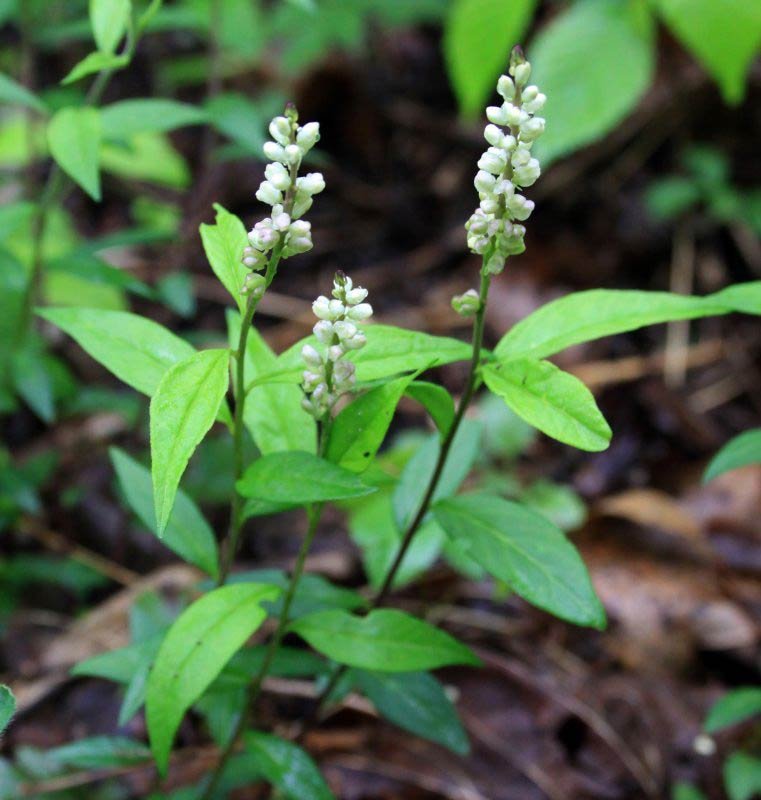
Botanical Name: Polygala Senega, Polygala Vulgaris
Kingdom: Plantae
Division: Magnoliophyta
Class: Magnoliopsida
Order: Fabales
Family: Polygalaceae
Genus: Polygala
Species: P. amarella
Popular Name: Seneca snakeroot
Part Used: Roots
Habitat: Cultivated in India
Description
Polygala Senega has a perennial branching root, from which several erect, simple, smooth, round, and leafy stems annually rise, around nine inches to a foot in height. The stems are occasionally tinged with red or purple at the end, but are green near the top. The leaves are alternate or scattered, lanceolate, pointed, smooth, and bright green on the upper surface. The outer three sepals in the flower of the plant are generally green and small in shape. In contrast, the inner two sepals are bigger in size and bright blue in colour. They can also be in white, mauve or pink in colour. Fresh senega root has a pleasant smell, similar to that of wintergreen. This fragrance is so because it contains approximately 0.1 % methyl salicylate. However, the active ingredient in the herb is a complex mixture of triterpenoid saponins. The concentration of triterpenoid saponins may range from 8 to 16%. Northern senega, which grows in the northwestern states of the United States, is considerably larger than the regular variety. It is also darker in colour.
Plant Chemicals
Seneca snakeroot contains a series of saponins, constructed from the 2, 3, 27-trihydroxy-oleanane 23, 28-dioic acid triterpene skeleton (presenegenin). A variety of methoxy-cinnamate esters are attached at the internal sugar of the C-28 chain. These saponins have been named senegins V and senegasaponins A-C, which can be analyzed by HPLC. Several other species of Polygala contain distinct, but very similar saponins based on the same sapogenin. An extensive series of ester oligosaccharides, senegoses A-O, have been isolated from P. senega var. latifolia.
Uses and Benefits of Senega Roots
- Senega root makes a persistent stimulant, which mainly influences the respiratory membranes, though the influence also extends to other mucous membranes, all the secretory organs, the uterus and the circulation.
- The herb promotes a smooth flow of saliva, stimulates expectoration, and causes an odd irritating sensation in the feces. It is chiefly used as an expectorant in old coughs, asthma and respiratory debility. The stimulant action of the root on the bronchial mucus membranes facilitates the coughing up of mucus from the chest. This makes wheezing easy.
- The plant is believed to possess sweat-inducing and diuretic properties. The leaves are also used for preparing tea.
Caution
Consumption of the herb in large doses can lead to a nauseating feeling. It is best used when combined with a large part of relaxing and demulcent agents.

